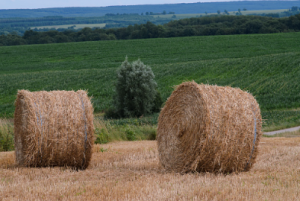Posted on April 21, 2022
What’s the Difference Between Jute, Sisal and Synthetic Baling Twine?
You may be asking: What is the difference between Jute, Sisal and Synthetic baling twine? Here’s an explanation of each of these types and their biodegradability. What’s more, let’s compare their benefits. Finally, here are some ways to use them to save your time and money. Listed below are some of the benefits of each. Use them for your farm’s purposes. Also listed below are some uses of each type of twine. For more information, check this out.
 Sisal twine
Sisal twine
When choosing twine for baling, look for sisal. This natural fibre is resistant to mildew, rot, and rodents. Typically, sisal twine is untreated. But, if you prefer treated twine, consider solar-degradable twine. This twine can last much longer than regular twine. And, it doesn’t cost much – 50 cents per bale.
The strength of sisal twine varies depending on the baling machine you use and the type of hay you’re baling. However, if you are aiming for a more uniform bale, you may want to use plastic or net wrap. Also, remember that twine must be the proper length and weight for the bale to be secure. Finally, many hay producers worry that sisal twine will rot, but it shouldn’t in an indoor, covered environment.
The best baling twine for farmers is biodegradable and is a natural product. Polypropylene balers twine is UV-treated and biodegradable. However, thousands of farmers use sisal twine in their balers. The twine is stronger than conventional twine and can be recycled. Biodegradable baler twine is also available in multiple colours and tensile strengths comparable to sisal.
While plastic and net wrap have been widely used to bind hay, sisal is a natural choice for many farmers. It’s biodegradable and digestible, a great benefit compared to plastic or net wrap. Plastic twine and net wrap can litter a barn or feedlot for years before decomposing. One study by North Dakota State University showed that plastic and net wrap remained in a cow’s rumen for 14 days while sisal twine did not.
Jute twine
Raw jute is a versatile and affordable natural fibre that can be woven into rope, matting, twine, or baling. It is also biodegradable and recyclable, making it ideal for baling materials. This article will look at how jute twine is produced and why it’s a viable choice for baling purposes. Listed below are some tips to help you get started using jute twine. For more information, check this out.
When used for baling, jute twine is soft and pliable, which prevents plants’ abrasion. It can also be used for hanging planters or dividing your garden plots. In addition to baling, you can also use jute twine for wrapping packages or tying plants. You can get 84 lb. tensile strength jute twine, perfect for kitchen and garden use. This twine comes in 5000 feet of brown jute twine and is a great choice for packaging and other uses.
Synthetic twine
CWC’s synthetic baling twine is tough polypropylene with additional bulk for enhanced handling and performance. In addition, this product is UV-resistant and easy on machinery parts. Synthetic big baler twine offers the added benefits of high UV inhibitors, and it’s easy on the environment, too. Read on to learn more about this product. Here are three things to know before buying it. These benefits make synthetic big baling twine the best choice for your business.
This report covers the global Synthetic baling twine market size and forecasts. It also identifies key players in the Synthetic Baling Twine market and their competitive landscape. In addition, the report includes detailed data on import and export, regional and country-level market size, and key regional and country-level drivers, trends, and strategies. It will help you make the right decision to capitalize on this emerging market and secure a place in the competitive market.
Biodegradability
A Mississippi State University student has won a $500 award for developing a biodegradable baling twine from hay. Paula Jean Runge, a mechanical engineering major from Perkinston, presented her idea during a competition for an alternative to conventional twine. Twine is commonly made from conventional plastics, making unfixing them a time-consuming chore. In addition, not only do bale twines pollute the fields, but they can also become stuck in agricultural machinery. For more information, check this out.

